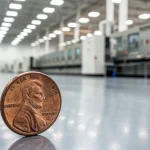The latest US jobs report has defied expectations and raised questions about the Federal Reserve’s plans for interest rate hikes. The 336,000 jobs added by US companies in September defied forecasts of a slowing labor market. Many people are wondering if the Federal Reserve will raise interest rates again in light of the recent unexpected acceleration in hiring. While the report indicates a strong economy, there are still factors that may influence the Fed’s decision-making process.
The Health of the US Labor Market
With upward revisions to the job totals in both July and August, the September jobs report showed a substantial increase in employment. The Federal Reserve’s forecast of a cooling job market has been called into question by this robust job growth. The US economy appears to have weathered the Fed’s fastest rate hikes in recent memory with relative ease, according to the data.
Analytical Headaches and Contradictory Signs
Since the report sends mixed messages, the Federal Reserve may have trouble deciding on an interest rate increase. Despite the quickening pace of job creation, wage increases have remained tame. The average hourly wage only increased by 0.2% from the previous month. A continued slowdown in inflation is anticipated in the coming inflation data, which may cause the Fed to rethink its interest rate hike plans.
Economic Impact on Financial Markets.
The surprising increase in employment has had a noticeable effect on the stock market. Bond markets have reacted differently to investors’ slightly higher wagers on a federal funds rate hike by year’s end. After the release of the employment data, the yield on 30-year Treasury bonds skyrocketed, crossing the 5% threshold for the first time since the financial crisis of 2007-2009. This increase in bond yields highlights the sensitive moment that the Fed and the economy are facing as they attempt to navigate a “soft landing” that balances inflation and employment.
Fed Conundrum
A discussion has begun within the Federal Reserve about the link between the labor market and inflation as a result of the unexpected job growth. The government is rethinking some of the economy’s most fundamental tenets in light of the possibility of reducing unemployment without causing inflation. Strong underlying demand, however, may necessitate the implementation of higher interest rates if prices are to be kept in check. Recent increases in long-term borrowing rates have raised the question of whether or not they pose a threat to the economy and could lead to a recession.
Impact Analysis on Monetary Policy
At their upcoming meeting on October 31 and November 1, the Federal Reserve is expected to discuss the most recent employment report and other economic indicators. Policymakers may be cautious in the face of rising bond yields, even if the strong job growth in September raises the prospect of another rate hike. The Consumer Price Index (CPI) report due out next week may prove decisive.
Joblessness and Market Developments
The labor market appears to be robust, as the unemployment rate has held steady at 3.8%. In September, the leisure and hospitality sector added 96,000 jobs, a significant increase. This increase in employment disproves the theory that growth in the labor market is concentrated in a few growing industries like healthcare and welfare. Hiring is widespread across sectors, which may indicate above-average economic growth in the US.
Economic Predictions From The Fed
A quarter-point rate hike may still be required by the end of the year, according to economic projections released in the middle of September, even though some Fed officials believed the job market was cooling. Many economists and policymakers have been caught off guard by the lack of impact on demand, economic growth, and hiring from the recent rate hikes.
Finding Economic and Price Stability
The Federal Reserve must maintain a fine line between controlling inflation and slowing the economy. Rising long-term bond yields in recent months have prompted concerns that the economy is being restrained more than is healthy. The central bank’s goal is to forestall a decline in economic activity without allowing prices or inflation expectations to spike
See first source: Reuters
FAQ
1. What did the latest US jobs report reveal about the labor market?
The September jobs report showed that US companies added 336,000 jobs, defying expectations of a slowing labor market. This unexpected acceleration in hiring has raised questions about the Federal Reserve’s plans for interest rate hikes.
2. How has the strong job growth impacted the Federal Reserve’s forecast?
The Federal Reserve’s forecast of a cooling job market has been called into question by the robust job growth in the report. The US economy appears to have weathered the Fed’s fastest rate hikes with relative ease.
3. What are the contradictory signs in the jobs report that may influence the Fed’s decision on interest rate hikes?
Despite the quickening pace of job creation, wage increases have remained modest, with the average hourly wage increasing by only 0.2% from the previous month. This raises questions about the Fed’s outlook on inflation and its interest rate hike plans.
4. How has the surprising increase in employment affected financial markets?
The increase in employment had a noticeable effect on financial markets. Bond markets reacted differently, with the yield on 30-year Treasury bonds crossing the 5% threshold for the first time since the financial crisis of 2007-2009. This highlights the sensitivity of the moment for the Fed and the economy.
5. What discussions have begun within the Federal Reserve as a result of the unexpected job growth?
The Fed is reevaluating the link between the labor market and inflation in light of the unexpected job growth. The possibility of reducing unemployment without causing inflation has led to a discussion about the need for higher interest rates to control prices.
6. How might rising bond yields impact the economy and monetary policy?
Rising long-term borrowing rates have raised concerns about potentially restraining the economy more than is healthy. The Federal Reserve aims to strike a balance between controlling inflation and supporting economic activity.
7. What is expected to be discussed at the upcoming Federal Reserve meeting on October 31 and November 1?
Policymakers are expected to discuss the most recent employment report and other economic indicators. Rising bond yields may make policymakers cautious, even with strong job growth raising the prospect of another rate hike. The upcoming Consumer Price Index (CPI) report may also play a decisive role.
8. How is the labor market performing in various sectors?
The leisure and hospitality sector added 96,000 jobs in September, indicating a significant increase in employment. This counters the theory that labor market growth is concentrated in a few industries like healthcare and welfare. Hiring is widespread across sectors, suggesting above-average economic growth in the US.
9. What are the economic predictions from the Federal Reserve?
Economic projections released in mid-September suggested that a quarter-point rate hike may still be required by the end of the year, despite some Fed officials believing the job market was cooling. The surprising lack of impact on demand, economic growth, and hiring from recent rate hikes has caught many economists and policymakers off guard.
10. What is the Federal Reserve’s goal regarding economic stability?
The Federal Reserve aims to maintain a fine line between controlling inflation and slowing the economy. Rising long-term bond yields have raised concerns about restraining the economy more than is healthy. The central bank’s goal is to prevent a decline in economic activity without allowing prices or inflation expectations to spike.
Featured Image Credit: Hunters Race; Unsplash – Thank you!







